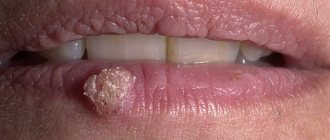When children get sick often, this is a sure sign that the immune system is not working at a sufficient level. To cope not only with the manifestation of the disease itself, but also to take a comprehensive approach to solving the problem that has arisen, you first need to make an appointment with a pediatrician and then an otolaryngologist. His consultation is indispensable when frequent diagnoses of a child at different ages sound like:
- ARVI, acute respiratory infections;
- exacerbation of chronic tonsillitis and adenoiditis;
- otitis;
- laryngitis;
- pharyngitis;
- angina.
Specialists from the first children's medical center in Saratov will help you select a comprehensive and effective treatment, who will conduct diagnostics, prescribe active treatment measures, and in addition select effective methods of prevention.
What to do if growths are visible in a child’s throat?
It is not uncommon for tumors to appear on the tonsils. This is a consequence of the papilloma virus, which manifests itself on the skin and mucous membranes. It would seem, where can a child catch this dangerous virus, which infects more than 70% of all inhabitants of the planet? First of all, in the womb, during birth, and also through contact and everyday life.
In the pharynx, neoplasms are most often found on the tonsils, but can be on the small tongue, palatine arches, and buccal mucosa. Only a pediatrician or otolaryngologist can make a diagnosis after examination.
Neoplasms on the larynx in children can form from birth; clinical manifestations often manifest in early childhood from 2 to 5 years. In children, this form of the disease indicates that treatment is necessary quickly and as competently as possible. Only an ENT doctor can diagnose such a localization of the process.
The active papilloma virus most often affects boys, but after 30 years, more women are affected. As a rule, the growths begin to manifest as impaired vocal function in the form of hoarseness, decreased timbre and rapid fatigue.
Laryngeal papilloma. Symptoms
Symptomatically, laryngeal papillomatosis can be represented by hoarseness, chronic cough, difficulty breathing, difficulty swallowing, recurring respiratory infections, and growth retardation in children. The presence of certain symptoms depends on the location of the papillomas. In children, the symptoms are more pronounced, since they have a significantly faster growth of papillomas, unlike adults. This can lead to situations in which emergency intervention is required for life-saving reasons, despite the histologically benign course of the disease. The prognosis is more favorable in terms of remission if the disease manifests itself in adulthood. The exception is the presence of HPV type 11 and the duration of the disease for more than 10 years.
How dangerous is this?
Often papillomas on the tonsils are benign in nature, but at any age it is not worth the risk, and it is better to initially seek professional advice to eliminate all risks. Medical specialists identify the following among the main factors provoking the appearance of education:
- heredity;
- violation of metabolic processes;
- frequent colds and their complex course.
What color are the formations?
Papillomas blend in with the color of the mucous membrane of the throat, but sometimes they can change their pigmentation, becoming light pink or dark brown. Initially, one formation may appear, which is similar in size to a pea or the head of a pin. Over time, the number of formations can increase significantly and the lesion will look like a cauliflower with multiple papillomas. Sometimes the appearance process can be accompanied by inflammation.
Why are papillomas in the mouth dangerous?
The main danger of papillomas on the mucous membranes is the possibility of their malignant transformation, which is accompanied by an oncological process. It cannot be said that this probability is very high, but most doctors agree that if the epilelium grows excessively, atypical cell growth can become uncontrollable.
In addition, papillomas in the mouth are usually accompanied by constant discomfort, which is associated with the location of a large number of nerve endings and sensitive centers on the oral mucosa. Treatment of papilloma in the throat is necessary due to the likelihood of its growth with subsequent problems with speech activity.
Also, treatment of papillomas in the mouth is justified from the point of view that this particular localization is accompanied by the highest risk of injury to the neoplasm. This can happen while eating, talking, or making facial expressions. In this case, severe bleeding occurs, which is very difficult to stop. In addition, a constant humid environment with an abundance of microorganisms prevents the rapid healing of the wound surface and, on the contrary, contributes to wound infection.
How does the tumor feel?
Sometimes the patient does not feel any changes at all due to its small size, since there are no nerve endings in the papilloma, but as the formation grows, symptoms such as awkwardness when swallowing, a feeling of a foreign body in the throat, and cough appear. Similar sensations occur during pharyngitis or laryngitis, and in order to exclude the appearance of formations, it is necessary to urgently make an appointment with a doctor. With a child, the situation is complicated by the fact that he cannot accurately describe his sensations, and it is also difficult for him to carefully examine the oral cavity and pharynx on his own.
Diagnosis, treatment and prevention of recurrence of papillomas is carried out only by a medical specialist under the careful supervision of all stages and the obligatory condition of checking the oncogenic nature.
Laser removal of papilloma in the throat. Progress in medicine helps.
The main thing is to keep up with it and take advantage of all the new opportunities. In the treatment of papillomatosis, these include the use of CO2 laser, narrow-spectrum endoscopy and certain antiviral drugs. But there is one prerequisite to achieve the best result - everything must be performed by a highly qualified surgeon with extensive experience in treating laryngeal papillomatosis. This is extremely important to understand.
Papillomatosis is characterized by the formation of exophytic growths that affect the mucous membrane of various parts of the larynx and underlying parts of the respiratory tract.
How to protect the body?
Since more than 600 strains of human papillomavirus are known in the world today, it is difficult to combat such microparticles comprehensively and constantly. First of all, it is necessary not only to see a doctor once, but also to undergo a regular course of treatment. Using folk remedies without supervision from medical personnel, formations on the larynx can develop into a malignant tumor, so self-medication, especially if the patient is a child, is strictly prohibited.
During the transitional climatic period, as well as in winter, there is a frequent exacerbation of chronic tonsillitis. This is due to the fact that the child does not always inhale frosty cold air through the nose, but breathes through the mouth. As a result, it is observed:
- elevated temperature;
- inflammatory processes in the throat;
- dry or wet cough;
- weak appetite;
- bad mood, high level of moodiness.
At an appointment with an otolaryngologist, a red throat is also diagnosed, and as a result, complications can spread to the nose, causing a chronic runny nose, and to the ears, causing otitis media, which is difficult and painful.
Sometimes, due to the fact that there is an exacerbation of chronic tonsillitis, it is difficult to visually determine the presence of a growth on your own. A swollen throat does not allow you to independently diagnose the formation, and if you do not consult a doctor for primary indications, you can lose valuable time for treatment.
There are times when, when it is necessary to treat otitis, all attention is switched to inflammatory processes in the ear, and parents do not even look into the child’s oral cavity. As a rule, concomitant diseases of the ear-nose-throat-system occur together, and competent comprehensive treatment is important so that getting rid of one ailment does not switch the development of the disease and complications in the other direction.
In the most advanced cases, complete removal of the affected “tonsil” is required (as patients often call the palatine tonsils). That is why it is important to consult a doctor in time to minimize this risk. If a child has frequent manifestations of colds, laryngitis or pharyngitis is diagnosed, then in addition to consultations with specialists at the center during the active stage and recovery from the disease, it is worth regularly showing the baby to doctors in order to exclude possible complications in the development of diseases.
The tumor on the tonsil itself does not go away, it may simply decrease in size, but this is not a reason to put off visiting a specialist. You shouldn’t risk your health, much less the health of your baby. Particular attention to the throat cavity should be paid in the following cases:
- when visiting a kindergarten and mass illness of children in it;
- when starting visits to sports sections, in particular the swimming pool.
A gathering of people who may also be carriers of the papilloma virus in one place can negatively affect the child’s health. The reason for a more thorough analysis of the throat cavity may be the use of antibiotics before this, non-compliance with the hygiene regime, as well as the active manifestation of oral diseases. If before this the child had a sore throat, and is now in the recovery period, then it is worth paying special attention to the condition of the throat in order to protect the child from formations on the tonsils. In case of mild laryngitis or pharyngitis, experts recommend carefully observing the child’s throat for a couple of days. To do this, in the morning and evening, ask the child to open his mouth to visually inspect for any formations on it, watch how the child eats, drinks and breathes.
Surgeries for tonsil cysts
The smaller the size of the cyst, the easier it is to perform surgical treatment. Small neoplasms with a thin wall are usually opened and the contents are pumped out. In the future, treatment continues and consists of the use of anti-inflammatory drugs and high-quality antiseptics. If this technique turns out to be ineffective, a classic operation is performed, when a specialist removes the tumor itself or all the tonsils if they show signs of hypertrophy and do not perform their protective functions.
The extent of surgical intervention depends on the size of the tumor, the condition of the ENT organs and the general well-being of the patient. The operation can be performed either under local anesthesia or general anesthesia. As a rule, long-term hospitalization of the patient is not required. It is very important to remove the cyst completely to eliminate the risk of recurrence of the pathology in the future. If the tumor is large, actively growing and often worsens tonsillitis and other ENT diseases, then a tonsillectomy is prescribed - an operation to remove the tonsils.
In our Clinic, such surgical interventions are performed using high-quality endoscopic equipment. Often, tonsillectomy is the only correct solution for frequently recurring tonsillitis and cysts on the tonsils.
After surgery, the patient is under the supervision of specialists for some time. Doctors monitor the patient’s condition and, if problems occur, provide the necessary medical assistance. The first day after removal of cysts or tonsils, you must observe relative rest: sports, visiting baths and saunas, and public swimming pools are prohibited. These restrictions are necessary to prevent bleeding and prevent the development of infectious complications. Food should be warm and as gentle as possible. During the first weeks, you should not eat foods that can injure the oral mucosa.
In the postoperative period, specialists can prescribe medications whose actions are aimed at relieving sore throat, relieving signs of inflammation and preventing secondary infections. Local procedures for gargling and irrigating the throat with antiseptics are also prescribed. Antiseptic treatment of the wound remaining after surgery must be carried out several times a day.
You should be attentive to your well-being and if you have any complaints, contact your doctor. Surgeries to remove cysts are successful, but in any case, patients must visit an otolaryngologist for several more months so that the doctor can monitor the quality of healing of the mucous membrane and, if there is a risk of relapse of the disease, can take all necessary therapeutic measures.
If you follow all medical recommendations and avoid heavy physical activity in the first weeks after surgery, the risk of relapse of the disease and complications will be minimal. You can ask the specialists of our Clinic in Yaroslavl all your questions. We will be happy to advise you and help you even in the most difficult clinical situations. For this, doctors have everything they need: innovative technology of European quality, rich practical experience of otolaryngologists, professional knowledge.
Early stages of infection
Juvenile formations on the tonsils have different causes, but if there is a conclusion that the child has been diagnosed with the papilloma virus, this requires parents to constantly monitor and pay attention to their health status. Specialists from the first children's medical center in Saratov will help you decide on the most effective preventive and therapeutic measures. If your child often coughs for no apparent reason, or says that he has an uncomfortable sensation of the presence of a foreign object in his throat, immediately sign up for a consultation and visit a specialist who will select the most appropriate and effective treatment.
Prevention of recurrence of tonsil cysts
After removal of the cysts, relapse of the disease may occur. To avoid this, it is necessary to prevent the occurrence of situations that provoke inflammation of the mucous membrane of the oropharynx. Try to promptly treat ENT diseases, especially tonsillitis, and avoid injury to mucous tissues. If you smoke, if possible, give up the bad habit or reduce the number of cigarettes you smoke to 1-2 per day. Tars and other substances contained in tobacco have an irritating effect on the throat and can provoke an exacerbation of sore throats.
If the patient has a history of frequent ENT diseases and relapses of tonsillitis, then the doctor may recommend removing the entire tonsil. A tonsillectomy will relieve you of chronic infection and many other health problems. But tonsil removal is carried out according to indications. You can talk about the need for total resection with the doctors of the CONSTANTA Clinic at your appointment.
If you have any questions or make an appointment with a specialist, please call: (4852) 37-00-85 Daily from 8:00 to 20:00
Sign up for a consultation
How is tonsil mass treated?
Traditionally, in the fight against otitis media or exacerbation of chronic tonsillitis, antibiotics and concomitant therapy are prescribed to minimize the negative impact on the gastrointestinal tract. If formations on the tonsils are confirmed and their nature is clarified, treatment is prescribed by a specialist. It is forbidden to rip off or burn papillomas yourself.
An experienced otolaryngologist, as well as with the necessary consultation of a professional surgeon, prescribe the most effective treatment methods, including:
- removal of tumors with laser;
- radio wave excision;
- freezing and removing formations using cold;
- electrocoagulation, when the papilloma is removed using current.
The method is selected taking into account:
- degree of damage;
- age;
- general condition of the body;
- individual reactions.
The papilloma virus cannot be cured, but everything can be done to block its manifestation.
Make an appointment with a surgeon
Choose a doctor
Human papillomavirus: symptoms and treatment
There are about 200 different types of HPV, of which more than 40 can infect the genitals, mouth and throat. Most people infected with HPV (Human Papilloma Virus) do not know they are infected. Some types cause common warts when they affect the skin. Other types cause sexually transmitted diseases. In fact, HPV is the most common sexually transmitted disease.
Human papillomavirus (HPV) can cause serious health problems, including genital diseases and some types of cancer.
Most people who have sexual contact and become infected with HPV do not develop any symptoms. Most HPV infections go dormant within two years. But in some cases, the infection causes long-term problems. These problems include cervical cancer in women, penile cancer in men, some types of rectal cancer in both sexes, and oropharyngeal cancer (cancer of the nasopharynx, tongue, and tonsil).
Previously, nasopharyngeal cancer was associated with smoking or alcohol abuse. Today, oral and nasal cancers associated with smoking and alcohol are much less common, while HPV cancers are on the rise. By 2022, HPV-related cancers of the mouth and throat are predicted to be more common than cervical cancers. Unfortunately, cancer of the oral cavity and oropharynx is most often invisible to the patient, provided it is at an early stage of development with minimal symptoms. This is why the main goal of the dentist or surgeon is to rule out or confirm this diagnosis. As with other cancers you know about, such as cervical, skin, prostate, colon and breast tumors, correct diagnosis is the only factor in effective treatment in the early stages of development.
At the first stage, a full examination by an ENT doctor is carried out, including an analysis of the medical history (symptoms, duration of symptoms, taking into account the patient’s profession, marital status, etc.). This is followed by an initial examination with examination of the nose, mouth, throat, palpation of the tonsils, and tongue. The diagnosis also includes examination of the cervix in women and a basic endoscopic examination of the nasopharynx with a flexible endoscope.
If there is some suspicion, we also perform other tests (blood tests, cultures, ultrasound, CT, MRI, etc.). If an HPV infection is suspected, a tissue sample can be taken and sent for histological and immunohistochemical examination.
What is HPV?
The same types of HPV that are localized in the genital area can infect the mouth and throat. Some types of HPV in the mouth, which have a high risk of malignancy, can cause cancer in the head and neck area. Other types of HPV lesions (known to have a low chance of becoming malignant) cause warts to appear in the mouth, throat, and tongue. In most cases, infection with all types of HPV can cause various health problems.
HPV is transmitted by direct contact with the skin or mucous membrane. However, simple transmission of the virus from person to person does not usually cause acute symptoms. The conditions for the virus to penetrate the epithelium imply the presence of abrasions and microtraumas. People often become infected through oral sex.
Is there a risk
Risk factors for HPV are:
- Increased sexual activity is a risk factor, especially if you have many sexual partners. If you have had 20 or more sexual partners, your chance of contracting HPV may be greater than 20%.
- Smoking is a risk factor. Inhaling tobacco reduces the protection of the mucous membrane, making the mouth more susceptible to infections. Oral leukoplakia (symptoms of leukoplakia are a firm, hard, white, slightly raised plaque or patch on the cheek, gum or tongue, and sometimes on the lower lip).
- Alcohol consumption is a risk factor. You are even more at risk if you smoke and drink.
- Men are more susceptible to oral HPV infection than women.
- Age is a risk factor for oropharyngeal cancer. These cases are more common in adults.
Symptoms
HPV in the mouth is often asymptomatic, so people do not know they are infected. At the same time, patients, out of ignorance, are less likely to take the necessary measures to limit the spread of the disease.
In some cases, it is possible to develop warts on the tongue, mouth or throat, but this is not common.
Some types of HPV can develop into oral and tongue cancer. With oropharyngeal cancer, cancer cells can be found on the tongue, tonsils, and throat walls. These cancer cells can “grow” from HPV in the mouth to become malignant.
How can I reduce my risk of getting oral HPV?
There are currently no experts who have researched how to prevent HPV infection. However, it is likely that condoms, when used frequently and correctly, can significantly reduce the likelihood of contracting HPV during sexual intercourse because they act as barriers and prevent the transmission of HPV from person to person.
More research is needed to understand how HPV (Human Papillomavirus) is transmitted, how infection can be prevented, and who is most susceptible to health problems from oral HPV infection.
Is there HPV testing for me to find out if I have oral HPV?
There is not yet a test to diagnose HPV in the mouth or throat. But if there is a suspicion of involvement of the mouth or throat, histological and immunohistochemical examinations can be carried out to identify HPV and its subtypes.
Can the HPV vaccine prevent oral and oropharyngeal cancer?
There are currently HPV vaccines on the market that prevent cervical cancer and other less common cancers. It is likely that HPV vaccines may also prevent oropharyngeal cancer because vaccination prevents initial infection with various types of HPV that can cause oropharyngeal cancer. However, no studies have been conducted to determine whether HPV vaccines will prevent oral cancer, tongue cancer, and nasopharyngeal cancer.
How is HPV in the mouth treated?
It takes a long time after you are infected with most types of HPV before they begin to cause damage to your mouth. If you have HPV-related warts in your mouth, a surgeon can remove them in the clinic under local or general anesthesia. Treating oral warts with topical therapy can be difficult as recurrences are unfortunately very common.
A doctor can use any of the following methods to treat warts: classical surgical removal, removal of warts using laser or radio frequency, cryotherapy, interferon alpha-2b (Intron A, Roferon-A) in injection form. Usually, if you have warts in the throat, tongue or mouth, they can be removed with a local anesthetic without pain.
If you notice any of these symptoms and you know or think that you may be infected with HPV, you should be examined by an ENT doctor to confirm the diagnosis.
Why shouldn't you remove throat plugs yourself?
If chronic tonsillitis has reached the stage of formation of plugs in the throat, then you will not be able to get rid of them on your own, without resorting to the help of a doctor. Quite often, the majority of those who encounter blockages in the throat, given the pain and bad breath, resort to removal on their own. This is achieved by pressing on the tonsil with your fingers, picking out plugs from the lacunae with a spoon or match. This method is categorically inappropriate, since the superficial part of the plug is removed, and not the depth of the tonsil.
Congestion in the throat is the result of pathomorphological processes that occur in the palatine tonsils as a result of chronic inflammation. Also, along with plugs in the throat, liquid fractions of pus may be present. Therefore, in order to get rid of congestion in the throat, it is necessary to influence all important components of the pathogenesis of chronic tonsillitis .
Independent methods of removing plugs in the throat will only aggravate the course of the disease (traumatization of tonsil tissue), which will further activate the scarring process in the area of the lacunae, which ultimately complicates the process of evacuation of purulent plugs. Neither all kinds of rinsing, nor other methods of self-medication will help properly, which, on the contrary, can ultimately lead to decompensation of chronic tonsillitis and the creation of plugs in the throat.
Causes of purulent plugs in the throat
Unpleasant sensations and pain in the throat accompany any person throughout the illness. The symptoms and consequences of a disease such as a congestion in the throat may be different for everyone, and are determined only by a medical specialist. Diagnostics involves a blood test, smear and other medical procedures that allow you to correctly establish a diagnosis and prescribe effective treatment. Redness and sore throat can be eliminated at home, but purulent plugs in the throat of various etiologies certainly require special treatment and attention.
The cause of purulent plugs in the throat can be different. But the result of any cause may be inflammation of the tonsils. The tonsils are lymphoid tissue that protect the throat from various infections. A severe inflammatory process in the tonsils can be caused by various microbes, which is why a correct diagnosis can only be made by obtaining a smear of the larynx.
Sore throat can be caused by microbes such as streptococcus, pneumococcus, staphylococcus or adenoviruses, and diphtheria - by diphtheria microbes. Only timely treatment of purulent plugs in the throat will help avoid serious complications .
Removal of a polyp in the throat: price
The cost of surgical treatment of a polyp in the throat depends on the method of intervention, stage and other factors. The price of this service is determined after a comprehensive diagnosis in accordance with the current price list at the Yusupov Hospital. Each patient has the opportunity to receive complete information about the scope of treatment measures and their cost.
For patients diagnosed with throat polyps, oncologists develop an individual treatment plan. The key to high quality medical services provided to patients at the Yusupov Hospital is an integrated approach to solving this problem.










